The time and effort grant reviewers invest in their roles is invaluable to their organizations, foundations, programs, and agencies in making funding decisions. Decisions that can, ultimately, improve our greater communities and our lives.
But being a grant reviewer comes with a lot of responsibility and may feel overwhelming. You often have a lot of proposals to analyze and score, and your decisions have significant consequences for your organization, grant applicants, and everyone affected by the grant’s outcome.
And often, there’s a lot of money on the line.
How can you balance your workload with giving each application the care and attention it deserves? How can you approach your role with consideration, empathy, objectivity, and kindness? And, particularly, how can you help your organization select the highest quality grant recipients and make the most impact?
Let’s take a look.

13 steps to becoming a great grant reviewer
While scoring rubrics and review stages may vary across grant programs, there are some universal best practices for grant reviewers, no matter the size or complexity of the grant.
Below, we’ve collected the best advice from experienced grantmakers of all kinds, from those who run large federal research grants worth millions, to small, grassroots organizations that dole out small awards to individuals.
1. Fully understand the grant and its mission
Do your research. Before you crack open the first page of a proposal, you need to have a rock solid understanding of the grant that you’re reading for.
Remember: you are not looking for the best written proposal, or even the most exciting proposal. You are looking for the best fit for your organization’s mission.
So, how do you determine best fit?
There will likely be reading materials and trainings on how to review the proposals assigned to you. But you should also specifically read the organization’s mission and philosophy, as well as any history of the organization and past awarded grants. (The website is usually a great resource.)
What you learn about your organization’s goals and intended impact should be your guiding light as you review applications.
Central questions to ask as you read each proposal:
- Does this proposal align with the organization’s mission?
- Does this proposal serve the communities we are committed to serve?
- Will this proposal create a significant impact?
- Does the proposal include great ideas as well as a plan to make those ideas happen?
- Is this proposal innovative?
2. Get to know the scoring rubric
When you’re confident that you’re familiar with your organization’s mission and goals, get just as familiar with the grant’s guidelines.
These are the rules and requests outlined by the grantmakers and read by anyone who applies for the grant. The guidelines will cover much of what you’ve learned about the grant’s mission, as well as the specific information that will be used to judge each application.
The guidelines heavily influence the grant’s scoring rubric or matrix, which will be the next aspect of the process you’ll need to understand intimately.
Scoring rubrics are created in order to:
- Ensure reviewers are being objective
- Ensure reviewers are scoring the correct aspects of the application
- Fight bias and discrinmination
- Give each reviewer’s analysis equal weight
- Make synthesizing multiple scores easier
The right grant management software makes it easy for reviewers to fill out rubrics, from answering “yes” and “no” questions, to entering numeric scores, to leaving written comments. And that makes finding the highest quality applications easy, too.

3. Determine eligibility
The first task you have after opening a grant proposal is to make sure that the applicant qualifies for the grant program at all.
It can be a huge waste of time and budget if every grant reviewer reads through pages and pages of application materials only to realize that the organization doesn’t meet a simple requirement. Common prerequisites include having nonprofit status, being located in a specific geographic area, or being of a certain size.
The best grant review processes manage many questions of eligibility automatically. For example, Submittable’s eligibility quiz feature can bar applicants from reaching your grant application form at all if they don’t qualify.
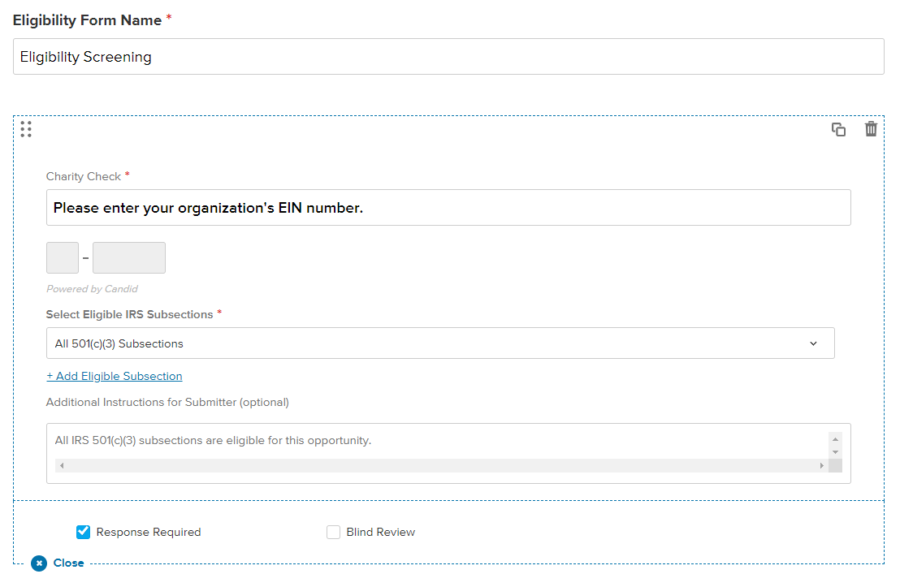
In other cases, organizations might break grant review into multiple stages so that one group of reviewers determine eligibility while others look at the details of the proposal.
For example, the American Institute of Architects—California uses Submittable to break review down into multiple rounds to flag ineligible applicants quickly.
A first round of experienced environmental experts examines each application to determine that a project is green and sustainable as required by the award program. Projects that pass this initial test move on to be graded on other criteria such as innovation and design.
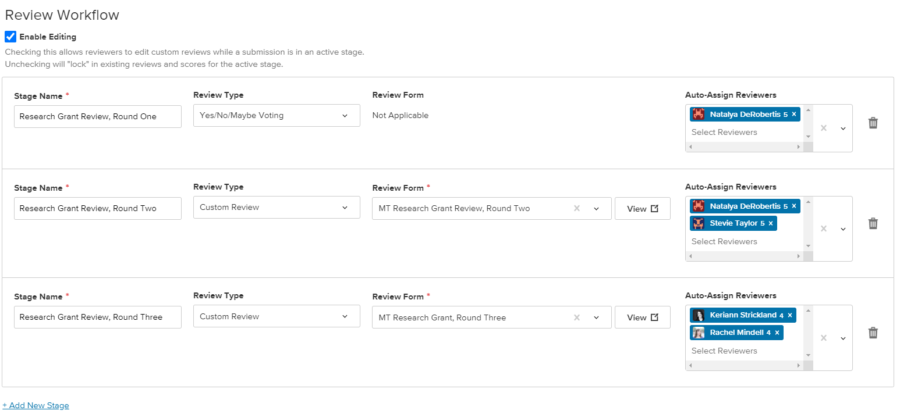
4. Read through the entire application
Once you’ve determined basic eligibility, always read through the entire application before starting the scoring process. Make notes as needed, especially related to the scoring rubric.
Budget a reasonable amount of time for each application so you can read it in one sitting.
Try to keep an open mind, noting both the strengths and weaknesses of the proposal.
If you start to skim, ask yourself why. Is it because the proposal isn’t interesting, or because you’re fatigued or unfocused? If it’s the latter, consider taking a break.
5. Acknowledge the grant writer’s constraints
We can’t stress it enough: your main job is not to score just the presentation of the grant proposal, but the contents of the proposal.
Well-written, orderly applications that follow all guidelines are noteworthy and good, for sure. But compliance shouldn’t be the end of your consideration. If an application is poorly written or doesn’t exactly follow submission guidelines, ask yourself why that might be the case.
For example, applications from smaller or newer organizations might not have had the person-power or budget behind them like applications from larger organizations do.
Applications from an author with a disability might look different from an application from someone without one, based on the technology they use to submit their application.
Applications that use alternate methods of communication (for example, a video essay instead of a written essay) are still valid.
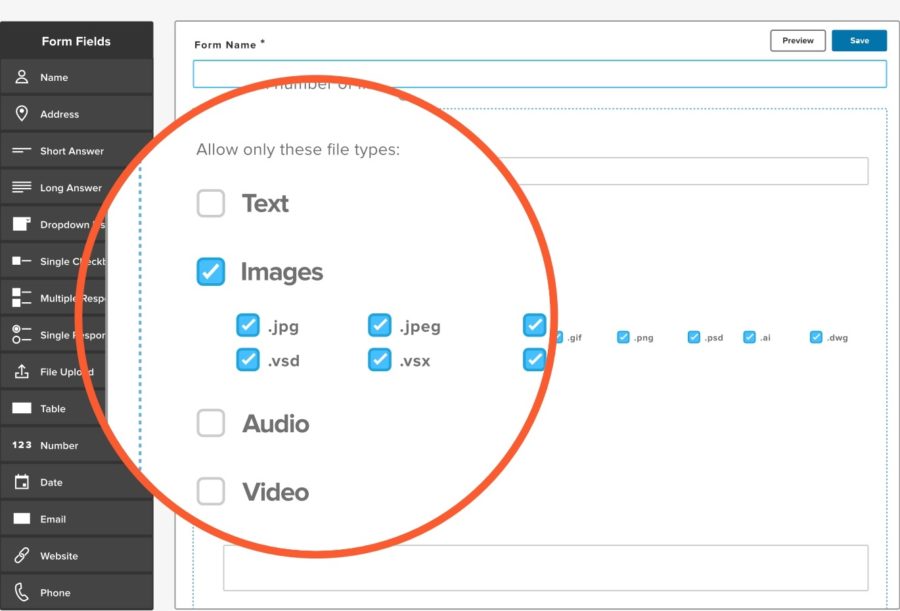
6. Be clear and concise when commenting
Writing your own notes during your first read-through of the application and leaving comments for the rest of the group and/or the grant applicant are two different things.
Your notes to yourself can be whatever is most helpful to you. But the official notes and comments you leave in the application’s folder should be clear, concise, and specific.
Be explicit and justify your position using facts and figures from the application. Quote from the proposal or from the grant program guidelines when it is helpful. If your review is only an initial part of the grant selection process, you may need to back up your position later in a group meeting or later stage of decision making.
Here are some other quick tips:
- Be constructive above all else
- Don’t let your emotions get mixed up with your comments
- Call out your specific expertise or knowledge when appropriate
- Align your written comments with numerical scoring
- Give actionable advice
Also remember: don’t put identifying remarks in anonymous reviews. If you know that others should not be able to identify you by your comments, refrain by mentioning information that could clearly tie your remarks to your person, such as your job position.
Finally, determine whether the grant applicant will have access to your comments at the end of the review process. If so, you may take extra effort to offer constructive feedback that can help the grant writer improve their work next time.
7. Establish a professional tone
Your tone of voice is almost as important as your expertise and the contents of your comments.
Being overly emotional or critical—or worse, being sarcastic, mean, or petty—takes value away from your thoughts and opinions (and could lose you your position as a reviewer, altogether).
A professional tone is:
- Earnest and empathetic
- Kind, but frank
- Straightforward and understanding
Putting a grant proposal into the world is a vulnerable act. The grant writers and organizations who submitted the application are trying to do something good and important.
Even if they didn’t quite get it right, or even if they aren’t the best fit for your organization’s goals, they deserve your time and respect. Your expert comments could help them get closer to realizing their goals in the future.
8. Understand bias
One of the biggest responsibilities of a grant reviewer is to acknowledge, understand, and constantly fight against bias. If you don’t believe your work is affected by unconscious bias, you simply should not be a grant reviewer.
First and foremost? Know that there are a whole lot of different types of bias, both conscious and unconscious. While many people are familiar with common types of bias, like bias based on race, gender, or sexual orientation, bias doesn’t end there.
When reading applications, you might be biased:
- …in favor of applications that you read first
- …toward organizations of a particular size
- …against organizations who serve certain communities
- …against certain types of applications (like video applications)
Immediately report any conflicts of interest that might emerge as you’re reviewing a grant. For example, maybe you realize you know the person who wrote it, you donate to their organization, or you mentor someone on their team.

Reporting a conflict of interest won’t get you in trouble or disrupt the process; the grant will simply be assigned to another reviewer.
Submittable can help reduce bias in the grant review process without putting the burden of fighting bias squarely onto reviewers.
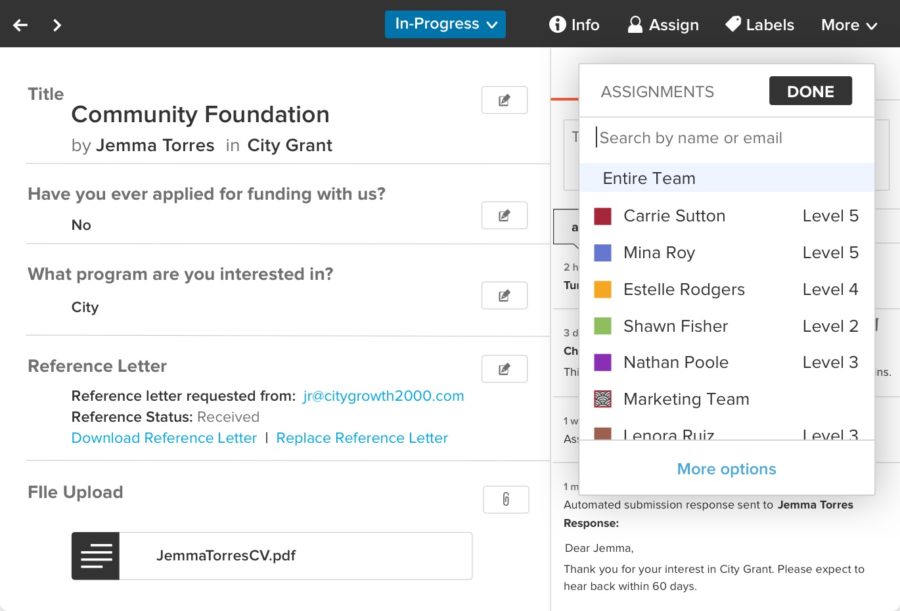
Want to improve your grant management process?
Submittable simplifies even robust grant review processes to save you time and increase your impact.
9. Take the time you need
One of the biggest mistakes underperforming grant reviewers make is not making productive use of their time or not budgeting their time wisely.
Trying to review all of the proposals assigned to you in a single sitting could be extremely unpleasant for you, as well as extremely unfair to the grant applicants you’re reviewing and the grant programs that you’re trying to assist.
Instead, start reviewing grants as soon as you receive them, and don’t review more than three or four grants in a sitting.
Learn to budget your time by timing how long it takes you to complete certain reviewer tasks, like determining eligibility, reading through the proposal, and leaving comments.
10. Realize that it’s a group process
You might be alone when you’re reviewing grants at your computer, but the vast majority of grant review processes involve a group of people—sometimes dozens or even hundreds of people working across one organization’s grant programs.
What does it mean to review as part of a group? Here are some things to keep in mind:
- Your comments have to be extremely clear and direct, as many people need to understand them.
- You may need to defend your position against others, so be sure to bring evidence with you.
- You don’t just have to watch out for bias when it comes to reading proposals, you also have to watch out for bias when it comes to listening to peer reviewers.
- If your scoring is significantly out of line with others, ask yourself why.
Submittable’s tools help teams of reviewers come to final decisions and understand each other with minimal conflict and maximum fairness.
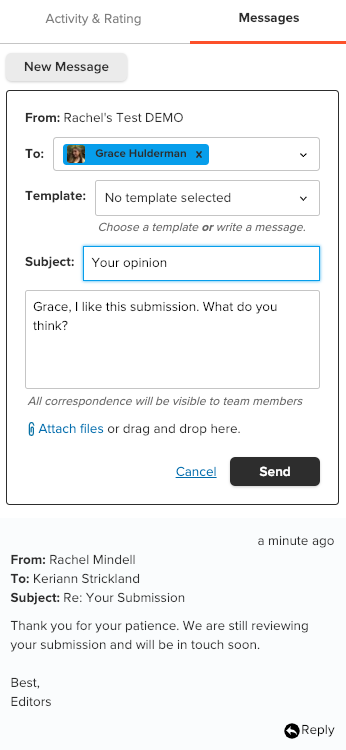
11. Revisit reviews for scoring consistency
Once you read a grant proposal, score it, and leave your comments, your job isn’t quite done.
You might gain a new perspective once all of your grant proposals are done. Maybe you didn’t realize how high the bar was when you first started scoring, or maybe the opposite happened and you didn’t realize how impressive the early round of applications was.
Either way, go back to your previous reviews at the end of your process to make sure that you’ve been consistent and fair.
Make certain to budget time for this step at the beginning of your process so that you have the opportunity to spend a few hours to overview everything before the final deadline.
12. Maintain confidentiality
This is a short and sweet point, but it deserves its own callout.
What you read in the grant proposals you read is confidential and should not be discussed with outside parties. Period.
13. Give feedback to the grantmakers
Being a great grant reviewer means more than doing a wonderful job of reviewing grant proposals and sharing your expertise.
It’s also an opportunity to help your grant program make the review process better by sharing your feedback, input, and ideas with the administrators and grantmakers. The administration can do research into the process, but a lot of their best information about improvements comes from the reviewers themselves.
- Have you noticed ways that the team could make the grant review process or the program’s review policies more efficient or more fair?
- Do you think that you could improve communication?
- Are you seeing a snag in the process over and over again that should be addressed?
- Are there best practices or policies from other organization that you’ve worked for that could be stolen for the current process?
- Could the program improve compliance with accessibility standards?
- Could switching grant management systems or technology improve the review process?
After the review process is complete, share your thoughts and give suggestions for the next cycle. Your administrators—and the other reviewers—will thank you.
The role of a great grant reviewer
Being a great grant reviewer doesn’t come with accolades or awards or recognition.
But it does help your organization or foundation choose the very best fits for their funding and create the biggest impact in your community.
If you follow the above steps, you can be assured that you are doing good work for the greater good with your empathetic, thoughtful, helpful, and logical great review practices.
If you’re looking for technology that’ll help you bring your grant review process to the next level, learn more about Submittable’s grant management software.